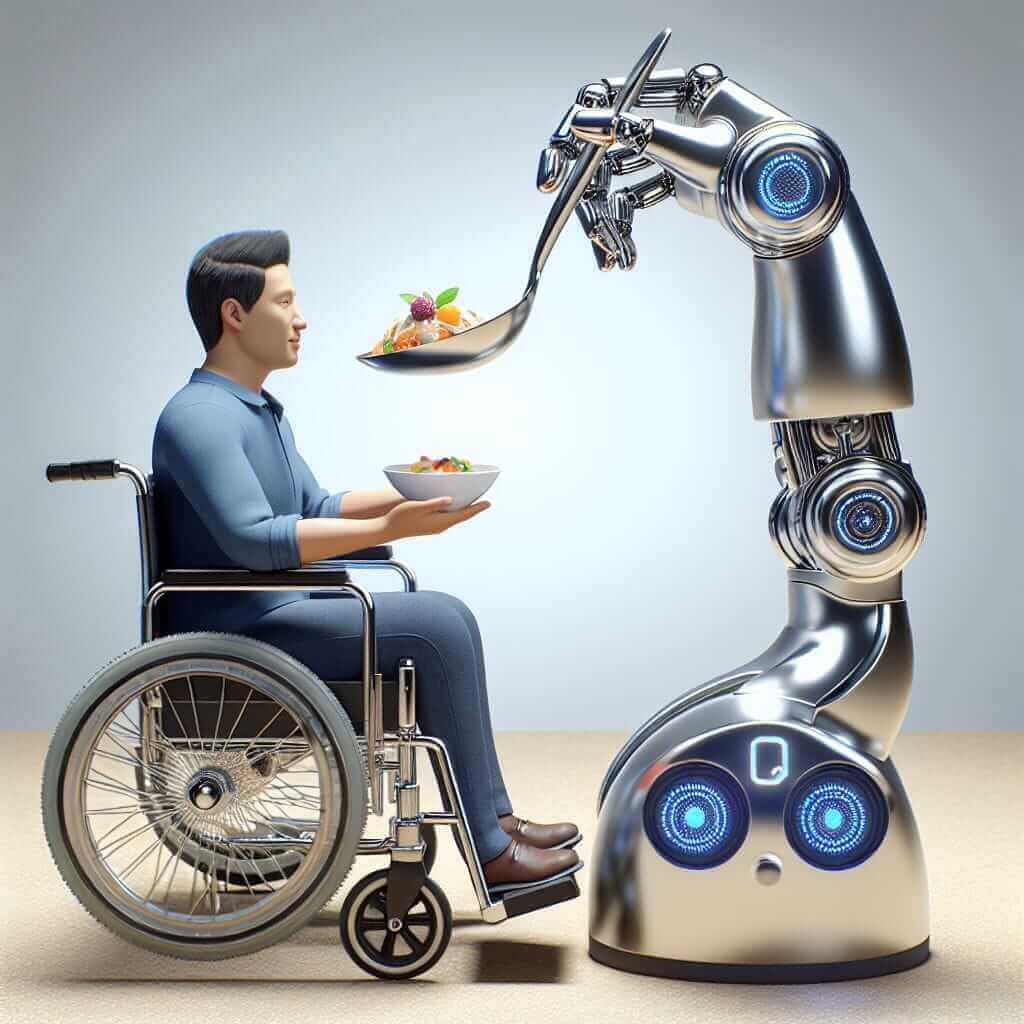The intersection of robotics and accessibility has emerged as a beacon of hope for millions globally. This fusion of technology and human need holds the potential to redefine independence and empower individuals with disabilities. It’s no surprise, then, that “The potential of robots in improving the quality of life for people with disabilities” is a topic increasingly explored in IELTS Writing Task 2.
Nội dung bài viết
This article delves into this pertinent issue, providing a comprehensive guide for IELTS test-takers looking to master this subject area. We’ll dissect potential essay questions, analyze a chosen prompt, craft a band-8 worthy response, and highlight key vocabulary to equip you with the tools for success.
IELTS Essay Prompts on Robots and Disability
Here are some potential IELTS Writing Task 2 questions related to this topic:
- To what extent do you agree that robots have the potential to significantly improve the quality of life for people with disabilities?
- Some argue that the high cost of robots designed for people with disabilities outweighs their benefits. Discuss both views and give your own opinion.
- What are the potential ethical considerations surrounding the increasing use of robots to assist people with disabilities?
Sample Essay Question
For the purpose of this guide, let’s focus on the following prompt:
To what extent do you agree that robots have the potential to significantly improve the quality of life for people with disabilities?
Essay Analysis
This question requires you to present a balanced argument, acknowledging both the potential benefits and limitations of robots in enhancing the lives of those with disabilities. You should clearly state your position while supporting your claims with relevant examples and logical reasoning.
Model Essay
The advent of sophisticated robotics has sparked considerable debate about its potential impact on various facets of human life, particularly for individuals with disabilities. While some express concerns about the ethical and economic implications, I firmly believe that robots hold immense promise in significantly improving the quality of life for this demographic.
One compelling argument in favor of this assertion is the potential for robots to foster independence and autonomy among people with disabilities. Tasks that many take for granted, such as preparing meals, getting dressed, or navigating their surroundings, can pose significant challenges. Robots, equipped with advanced sensors and dexterity, can bridge this gap, enabling individuals to perform these activities with greater ease and self-reliance. For instance, robotic arms can assist with eating and personal hygiene, while smart wheelchairs can offer greater mobility and navigation control. This newfound independence can have a transformative impact on self-esteem and overall well-being.

Furthermore, robots can play a crucial role in facilitating social inclusion and participation for people with disabilities. Communication robots can assist individuals with speech impairments, while telepresence robots can enable remote engagement in work, education, and social gatherings. This breakdown of traditional barriers fosters a more inclusive society where everyone can contribute meaningfully.
However, it is crucial to acknowledge the potential drawbacks. The high cost of developing and deploying these technologies may create accessibility barriers for many. Moreover, concerns about data privacy and the potential for robots to replace human interaction warrant careful consideration.
In conclusion, while acknowledging the potential challenges, the potential for robots to significantly enhance the lives of people with disabilities is undeniable. From fostering independence to promoting social inclusion, robots offer a glimpse into a future where disability does not equate to limitation. As technology continues to advance, it is imperative to prioritize ethical development and equitable access, ensuring that these transformative benefits reach all who stand to gain. (Word Count: 322)
Writing Tips
- Be Specific: Use concrete examples of robotic technologies and their applications to support your arguments.
- Address Counterarguments: Acknowledge potential drawbacks and offer balanced perspectives to demonstrate critical thinking.
- Use Linking Words: Employ a range of cohesive devices (e.g., furthermore, however, in conclusion) to enhance the flow and clarity of your essay.
Vocabulary Builder
Here are some key terms to enrich your essay:
- Assistive Technology (noun): /əˈsɪstɪv tekˈnɒlədʒi/: Technology designed to help people with disabilities.
- Prosthetic (adjective): /prɒsˈθetɪk/: Relating to an artificial body part.
- Exoskeleton (noun): /ˌeksəʊˈskelɪtən/: An external framework worn to support the body or enhance movement.
- Human-robot Interaction (noun): /ˈhjuːmən ˈrəʊbɒt ˌɪntərˈækʃən/: The study of how humans interact with robots.
- Ethical Implications (noun phrase): /ˈeθɪkəl ˌɪmplɪˈkeɪʃənz/: The moral considerations and potential consequences of a technology or action.
Conclusion
The potential for robots to empower and improve the lives of people with disabilities is vast. By mastering the vocabulary, understanding the nuances of the topic, and practicing your essay writing skills, you’ll be well-prepared to tackle any IELTS Writing Task 2 question on this subject with confidence. Remember to stay updated on current advancements and societal discussions surrounding this rapidly evolving field.